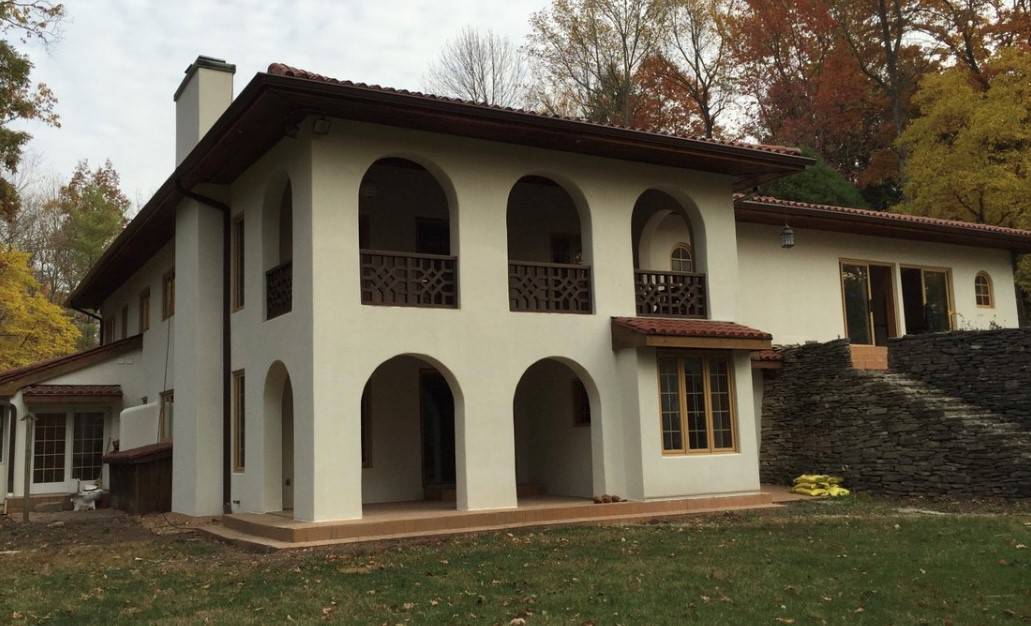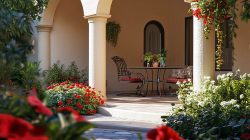Unlock the Secret to a Weather-Resistant Home with the Power of EIFS
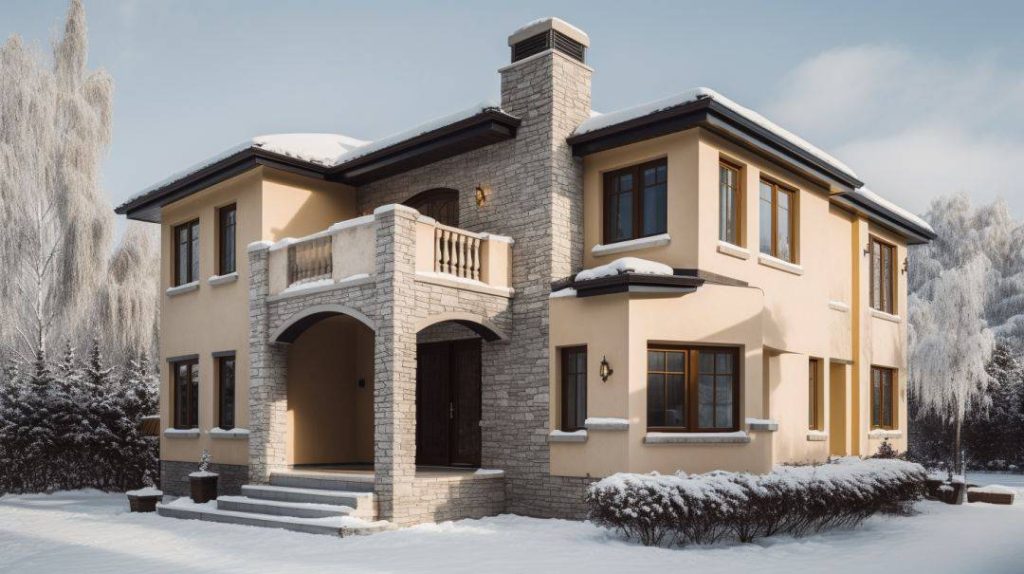
Introduction
With extreme weather becoming more frequent, homeowners are seeking ways to protect their houses from the elements. From heavy rain and flooding to high winds and hail, storms can cause extensive and costly damage if a home isn’t resilient. One of the best ways to weatherproof your house is by upgrading the exterior walls with effective insulation and air sealing. Advanced exterior insulation and finish systems, known as EIFS, offer exceptional weather resistance and can substantially limit storm damage.
EIFS refers to multi-layer wall systems comprised of continuous insulation boards, fiberglass reinforced base coats, adhesive layers, and textured acrylic finishes. Compared to traditional wood, brick, or basic stucco siding, EIFS provides superior insulation, minimizes air infiltration, and resists bulk water penetration when integrated properly. These attributes translate into excellent weatherproofing and resilience advantages versus conventional home siding.
The thick continuous layer of insulation used in EIFS offers far higher protection against temperature extremes than standard walls. The EPS foam boards mitigate heat loss in winter storms and reduce heat gain during peak summer sun. EIFS prevents cold air infiltration that leads to freezing pipes and ice damming issues. The acrylic finish coat and multiple lamination layers create excellent air barriers that resist wind-driven rain penetration.
EIFS is also lightweight and impact-resistant, mitigating storm debris damage from hail, flying branches, and wind pressure loads. Unlike wood, brick, or vinyl, EIFS won’t rot or crack over time. Correct detailing and proper flashing integration are critical to achieving weather-tight performance. An experienced certified EIFS installer is highly recommended.
Upgrading home walls to EIFS insulation can make your home more comfortable in all seasons. The superior thermal envelope reduces heat loss in winter, lowering energy bills. EIFS eliminates drafts, cold surfaces, ice dams, and other moisture infiltration issues caused by poor weatherproofing. The airtight construction keeps out dust and pollen. Exploring EIFS weatherization solutions for your next siding project is worth considering to protect your home from extreme weather.
Benefits of EIFS for Home Weatherproofing
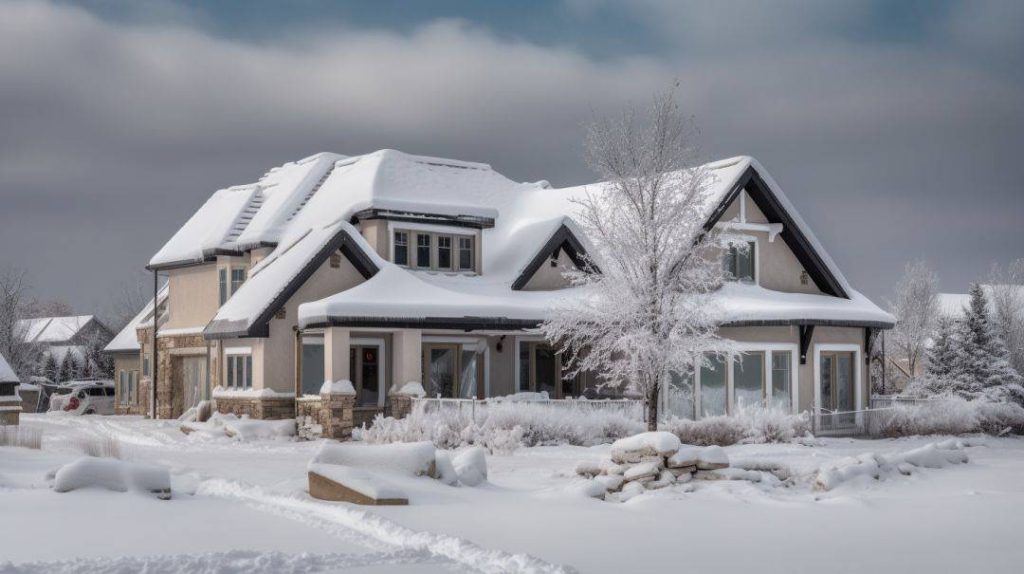
Moisture Resistance
Moisture intrusion leading to mold, rot, and structural issues is a major concern for home performance. EIFS provides enhanced water management capabilities compared to many conventional sidings when properly integrated.
- Drainage design – groove patterns, channels, and air gaps allow drainage while preventing infiltration.
- Vapor permeable – unlike vinyl, EIFS allows walls to breathe and dry while blocking liquid water.
- Continuous insulation – avoids gaps that allow moisture intrusion at sheathing joints.
- Impact-resistant finish – acrylic coat provides protection from wind-driven rain.
- Air barrier properties – multi-stage lamination prevents inward air transport of moisture.
- Integrated flashings – pan flashing, kick outs, and capillary breaks divert bulk water.
- Sealed penetrations – window, pipe, and other penetrations are detailed to prevent moisture bypass.
- Resists rot and mold – unlike wood, EIFS won’t support microbial growth if moisture barriers fail.
- Keeps wall cavities warm – avoids interstitial condensation issues common with poorly insulated walls.
With proper moisture control provisions, EIFS can provide long-term resilience against bulk water damage, condensation, and humidity issues caused by inferior building envelope performance.
Fire Resistance
Homeowner concerns about fire safety are valid when considering exterior claddings. EIFS offers inherent fire resistance advantages over combustible sidings.
- Noncombustible EPS – the foam plastic core won’t ignite or contribute to fire spread.
- Fire-rated assembly designs – tested configurations meet code requirements for fire separation.
- Intumescent base coat – expands when heated to provide additional heat insulation.
- Protects underlying structure – provides a heat and ignition barrier outside the framing.
- Flame spread resistance – won’t propagate fire laterally like wood, vinyl or asphalt sidings.
- Can achieve 1-hour fire ratings – protects structure long enough for escape or suppression.
- Acrylic won’t melt or drip – unlike vinyl that can fail catastrophically when ignited.
- Fireblocking at floors – fire-rated joint designs impede vertical fire spread.
- Non-combustible finishes – acrylic coat options reduce smoke and toxic gases.
- Simpler fire retrofits – applying EIFS is an easier path to fire rating than rebuilding interior walls.
When properly tested and certified, EIFS assemblies provide inherent fire performance benefits that enhance safety in residential buildings.

EIFS cladding offers multiple performance benefits that enhance the weather resistance and resilience of residential buildings. The continuous insulation layer, air barrier properties, and acrylic coating work together to create an exceptionally weather-tight building envelope.
Outstanding Weatherproofing
EIFS provides superior weatherproofing compared to traditional home cladding options through:
- Multi-stage water barriers – acrylic finish, reinforced base coat, and vapor-permeable membranes control bulk water intrusion
- Continuous insulation – no gaps for water penetration at transitions and connections
- Drainage provisions – integrated grooves, channels, and flashing avoid trapped moisture
- Impact resistant acrylic finish – resists hail, debris, and ultraviolet damage
- Minimal air infiltration – laminated coating layers prevent wind-driven rain penetration
- Moisture control detailing – pan flashings, kickouts, and capillary breaks direct water away
- Sealed transitions – window, door, vent, and pipe penetrations are detailed to prevent water entry
Properly integrated EIFS with rainscreen provisions forms a highly effective weather barrier that protects the structure and interior from the forces of extreme storms.
Energy Efficiency
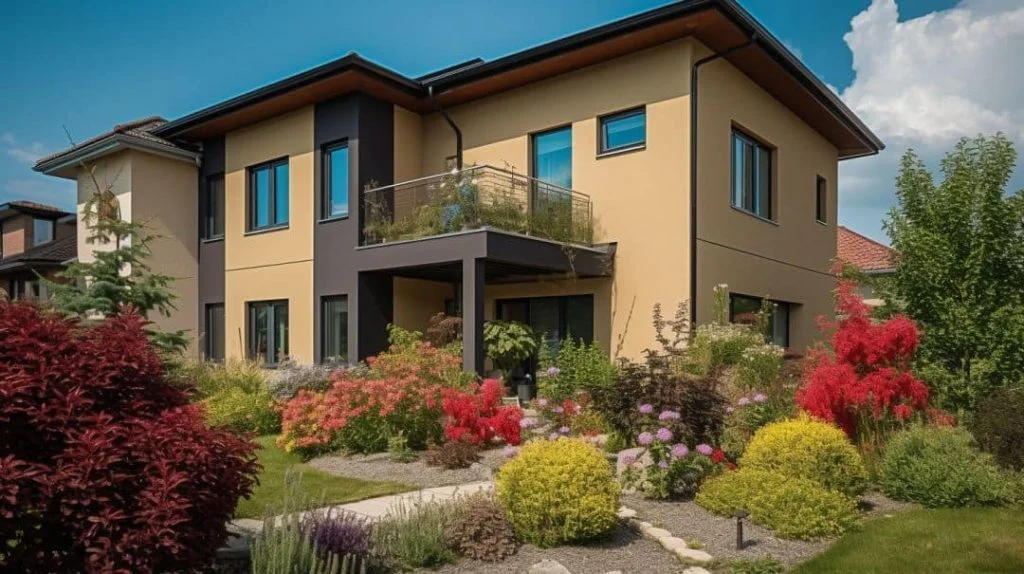
In addition to weatherproofing, upgrading to EIFS can significantly enhance a home’s thermal efficiency and energy performance.
- High R-value – EIFS provides a continuous layer of EPS insulation from R-22 to upwards of R-40, limiting heat flow far better than typical walls.
- Insulation exterior of structure – avoids thermal bridging through framing that undermines other insulations.
- Multi-stage air barriers – laminated coatings and precise detailing prevent air leakage, a major source of energy loss.
- Reduced thermal demand – limiting heat loss and gain cuts HVAC system runtime and energy consumption.
- Lower energy bills – improving the building envelope with EIFS can reduce winter heating costs by up to 40%.
- Passive solar potential– EIFS makes an ideal wall system for passive solar design, capturing and storing heat effectively.
- Comfort enhancement – balanced interior temperatures and elimination of drafts create more comfortable conditions.
- Condensation resistance – EIFS prevents mold and reduces humidity entry by keeping wall cavities warm.
- Smaller equipment sizing – lowered heating and cooling loads enable downsizing HVAC systems for additional savings.
With rising energy costs, EIFS insulation can provide substantial energy efficiency benefits for residential buildings while also enhancing interior comfort.
Durability
Long-term durability is essential for any exterior cladding product. EIFS provides lasting performance and resilience.
- Resists rot, decay, and termites – unlike wood sidings subject to biodegradation.
- Won’t dent, warp, or puncture – acrylic finish protects rigid EPS foam from damage.
- Hail/impact resistant – reinforced basecoat and acrylic finish prevent cracks and dents.
- Stable in all weather – won’t expand/contract or deteriorate from moisture like some products.
- Long service life – provides effective insulation performance for over 30 years.
- Flexible base coat – accommodates minor foundation movements to prevent cracks.
- UV/color stable – acrylic finish maintains appearance and performance for decades.
- Vapor permeable – allows walls to dry while shedding bulk water.
- Repairable – localized damage can be easily patched and refinished cost-effectively.
- Proven technology – billions of square feet installed over 30+ years demonstrates real-world durability.
Design Flexibility
Beyond performance benefits, EIFS offers outstanding aesthetic flexibility compared to conventional sidings.
- Unlimited colors and textures – acrylic finishes can mimic wood, stone, adobe, and other appearances.
- Insulation shaping – EPS can be sculpted and routed to create 3D textures and patterns.
- Seamless forms – avoids lap joints and piecemeal appearances of panelized systems.
- Integral detailing – cornices, reveals, and aesthetic features blended smoothly.
- Modern, contemporary aesthetics – sleek unified wall appearance.
- Simulated traditional styles – can recreate brick, siding, stucco, and other familiar looks.
- Low-maintenance finishes – acrylic coatings retain their appearance with simple cleaning.
- Visual customization – easy to change colors or finishes to refresh appearance.
EIFS provides endless design versatility from traditional simulated styles to contemporary avant-garde aesthetics.
How EIFS Enhances Home Weatherproofing
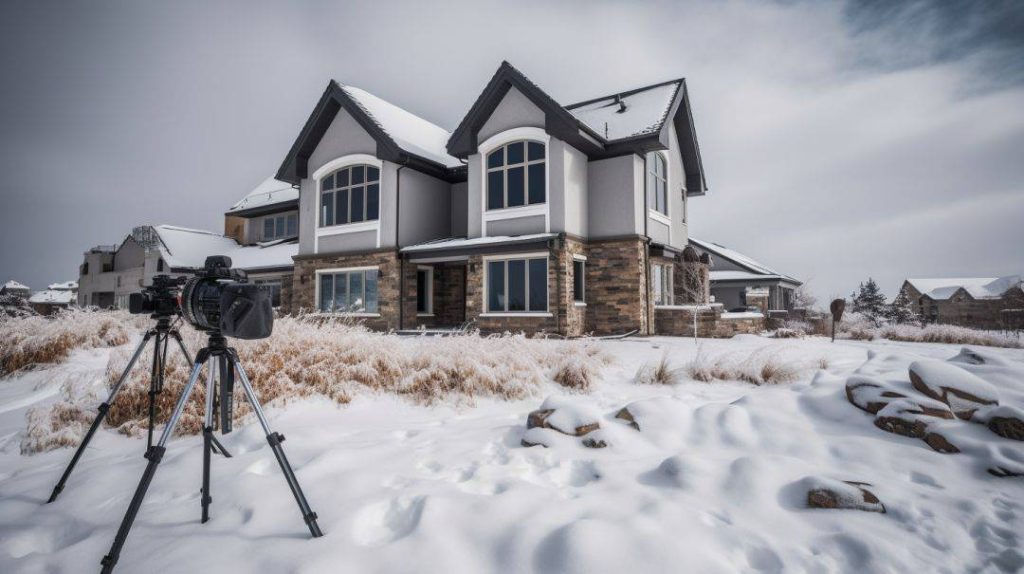
EIFS enhances weatherproofing and resilience through its specialized multi-layer composition tailored for moisture control, structural support, insulation, and air sealing. The synergistic components form a building envelope that protects against the elements.
Creates a Moisture Barrier
EIFS provides exceptional water management through coordinated moisture barriers:
- Vapor-permeable membranes allow inward drying while blocking outward vapor drive
- Reinforced polymer basecoat layer resists bulk water penetration
- Acrylic finish coat sheds water outward and seals walls
- Integrated drainage channels, air gaps, and flashings avoid trapped moisture
- Window and door details incorporate pan flashings and capillary breaks
- Multi-stage adhesive lamination bonds reduce air transport of humidity
Improves Exterior Durability
Impact-resistant EIFS enhances structural resilience:
- Rigid EPS foam provides hail and debris impact resistance
- Reinforcing mesh basecoat prevents cracks from minor wall movements
- Acrylic finish protects underlying EPS from UV damage and weathering
- Lightweight cladding won’t separate or deteriorate like some heavy systems
- Continuous insulation coverage avoids gaps that allow water infiltration
Reduces Air Infiltration
The EIFS barrier minimizes drafts and humidity entry:
- Adhesive lamination bonds between all layers reduce air leakage
- Acrylic finish coat seals the outer surface
- Attention to detailing at openings prevents air bypass
- Vestibule designs allow entry doors to remain closed
- Blower door testing verifies air tightness during construction
Increases the “R-Value” of the Home
Thick EPS insulation boosts whole wall R-value dramatically:
- EPS provides R-4 to R-5 per inch of thickness
- Typical installations range from R-22 up to R-40+
- Far higher insulation level than standard wood frame walls
- Continuity of insulation avoids thermal bridging
- Cuts heat loss through walls, reducing heating equipment sizing
EIFS vs. Traditional Stucco
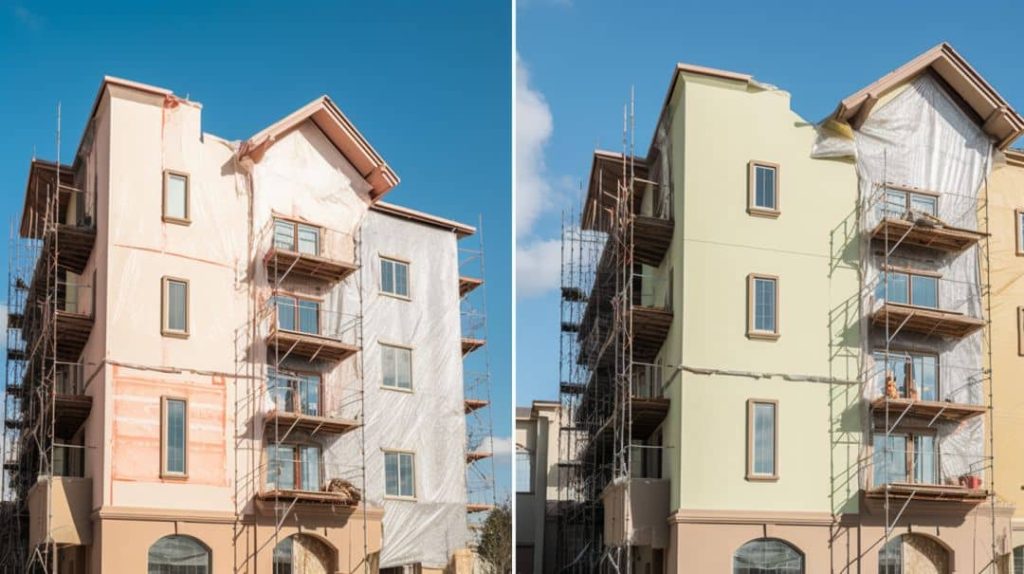
While EIFS is sometimes referred to as “synthetic stucco”, it has significant performance advantages compared to traditional stucco. The multi-layer composition and inclusion of thick continuous insulation provide far better thermal efficiency, weatherproofing, and moisture control.
Superior Insulation and Energy Efficiency
Traditional stucco cladding consists of steel wire reinforcement and cementitious base coats applied over sheathing or masonry substrates. While durable, standard stucco has minimal insulating value – it does not appreciably reduce heat loss on its own. This requires adding batt or rigid foam insulations underneath stucco. However, these conventional insulations leave thermal bridging gaps at framing and transitions.
EIFS avoids these weaknesses through its use of continuous exterior insulation. The EPS foam boards provide high R-values from R-22 up to R-40 depending on thickness. No framing interrupts the insulation layer as it does with interior cavity fill methods. EIFS also minimizes air infiltration far better than stucco assemblies. This combination of high insulation value and excellent air sealing creates a superior thermal building envelope.
Studies by the National Association of Home Builders found EIFS-sided homes achieved heating cost savings of 20-30% compared to conventional stucco and siding constructions. EIFS prevents thermal bridging far more effectively, lowering overall heat loss through the walls. Specifying EIFS is a smart strategy to limit energy costs and improve comfort.
Better Protection Against Moisture
Traditional stucco has an inherent weakness of trapping water that infiltrates behind the barrier. Weep screeds at the foundation attempt to drain this moisture, but often fail over time as they fill with dirt and debris. Stucco cracks also allow moisture intrusion, leading to rot, mold, and structural deterioration.
Conversely, modern EIFS installations incorporate integrated drainage provisions as a rainscreen cladding. An inner drainage layer, channels, and air gaps allow water that penetrates behind the acrylic finish to drain out fully. Flashings, kickouts, and drip edges also divert water away from sensitive areas.
The continuous insulation coverage of EIFS avoids gaps that allow water intrusion. The reinforced base coat and acrylic finish also prevent bulk water entry better than standard stucco mixes. For superior weatherproofing and water management required in humid climates, EIFS provides lasting benefits over stucco.
The Terraco EIFS System
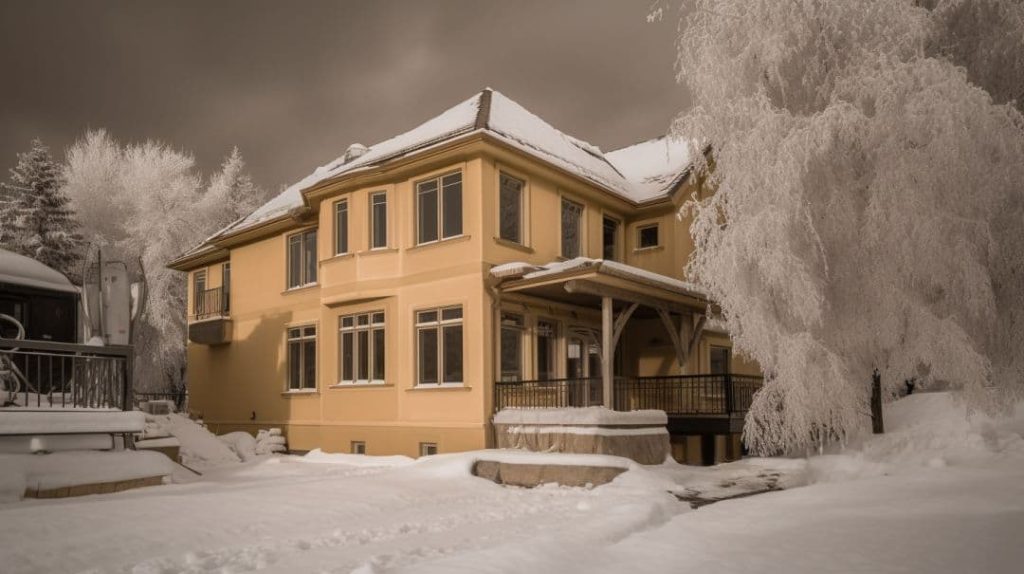
Terraco is a leading global manufacturer of EIFS products that combine aesthetic appeal with thermal efficiency. The company offers complete systems for residential and commercial applications.
Energy-Efficient Thermal Cladding
Terraco EIFS utilizes rigid EPS insulation boards that are cut and shaped to fit the wall substrate. These provide high R-values from R-22 to R-40 depending on the thickness specified. The boards attach adhesively as a continuous insulation barrier-free of thermal bridges.
Fiberglass mesh-reinforced basecoats are applied in layers over the EPS for strength and crack resistance. Terraco’s FlexiDry basecoat incorporates microscopic air channels that equalize air pressure to minimize water retention while allowing moisture vapor diffusion. This enhances weatherability and structural integrity.
Multiple acrylic primers and finish coats protect the EPS and complete the EIFS cladding. Terraco offers standard, metallic, hydrophobic, and other specialty finishes. These customize appearance while providing durable weatherproofing. The result is an energy-efficient, resilient exterior thermal envelope.
Decorative and Protective Finishes
Terraco EIFS finishes create dynamic aesthetic options for buildings. Available textures range from sand, adobe, and limestone grain to brick, wood plank, stucco, and metallic looks. Terraco’s Nanodecor line incorporates photocatalytic titanium dioxide nanoparticles to reduce surface soiling through the breakdown of organic matter.
Colors include standard palettes along with custom matching. Gloss levels vary from flat to high-sheen. Finishes can even incorporate embedded colored quartz aggregates and shells for a decorative appearance. Terraco’s Flexirender provides enhanced crack resistance and weatherability in all climates.
These durable, decorative finishes protect the EIFS insulation layer from weathering while offering creative design flexibility. Terraco can recreate traditional appearances or sleek modern aesthetics in the EIFS cladding.
Repairs and Maintenance for EIFS
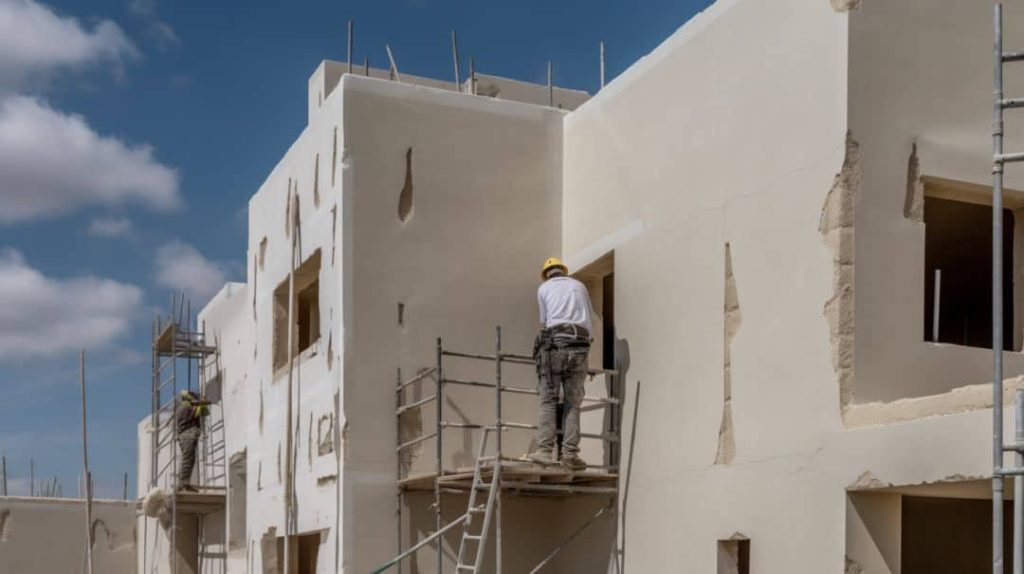
While durable, EIFS does require periodic inspection, maintenance, and repairs to ensure lasting performance. With proper care, EIFS cladding will provide many decades of energy efficiency, protection, and aesthetic appeal.
Ensuring Long-Term Functionality
Regular maintenance is key to maximizing EIFS lifespan and minimizing costly repairs:
- Annual inspections check for cracks, seal failures, dripping faucets eroding finishes
- Gutter and downspout maintenance prevents water from cascading down walls
- Vegetation kept trimmed back from walls avoids root damage and moisture issues
- Recoating acrylic finishes every 7-10 years refreshes water protection
- Resealing wall penetrations, joints, and window perimeters every 3-5 years
- Promptly fixing any leaks, drips, or flashing failures to prevent water damage
- Cleaning EIFS with low-pressure washing and mild cleaners removes soiling
With routine upkeep and preventative maintenance, an EIFS facade will last over 30 years.
Addressing Any Damage or Wear
Minor EIFS damage can be readily repaired by qualified contractors:
- Small cracks and punctures can be filled with elastomeric sealants
- Larger damaged areas may need base coat repairs and mesh embedding
- Severe damage may require replacing sections of insulation board before recoating
- Aesthetic restoration involves applying new primer and finish coats
- Moisture issues require investigation for leaks or flashing failures
- Damaged flashings, penetrations, and transitions resealed or replaced
EIFS repairs are often a cost-effective alternative to full-wall replacement. With proper maintenance and timely fixes, EIFS durability and performance can be sustained long-term.
Specifications and System Components
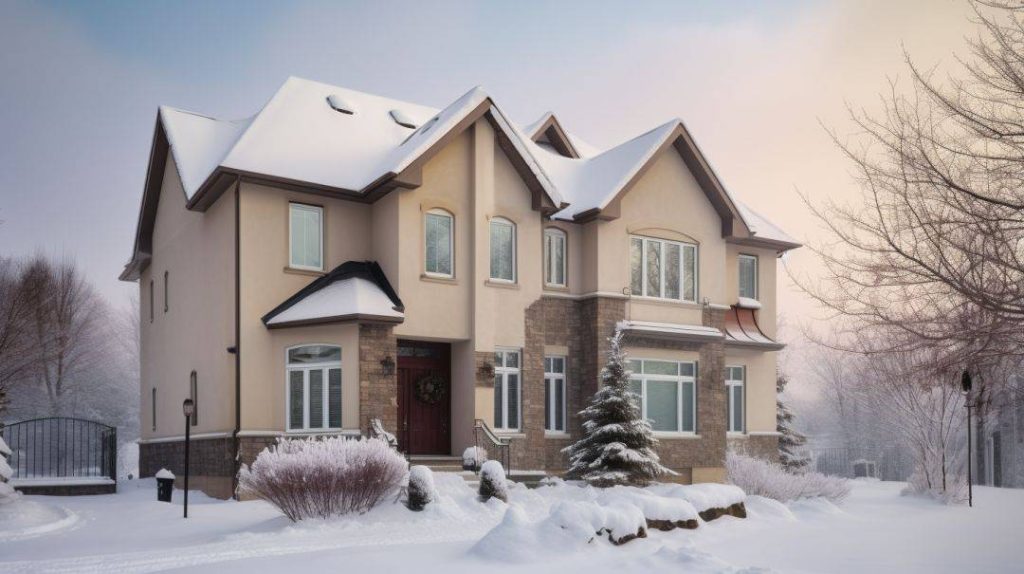
Proper specification and integration of EIFS components suited for local climate and architecture are critical to achieving high performance. Careful product selection and certified design are recommended.
Understanding the Components of EIFS
EIFS comprise multiple integrated layers engineered to control heat, air, and moisture. Key elements include:
- Adhesive and Base Coats: Provide bond strength between layers while allowing vapor permeability. Flexible formulations accommodate minor structural movements. Reinforcing fibers increase tensile strength.
- Insulation Boards: Rigid expanded polystyrene (EPS) foam boards cut to fit the substrate. R-values range from R-4 to R-5 per inch of thickness based on density. Thickness is selected to meet thermal requirements and design goals. Common sizes are 2, 3, and 4 inches thick.
- Reinforcing Mesh: Alkali-resistant fiberglass mesh embedded in the base coat for impact protection. Varies from standard to high-strength. May have vertical and horizontal members. Promotes crack resistance and structural integrity.
- Primers: Improve adhesion and bond between base coat and finish coat. Vary based on substrate and finish coat compatibility. Enhance finish color uniformity and vibrancy.
- Finish Coat: Protective acrylic-based coatings with integrated water resistance, vapor permeability, and fade resistance. Come in endless colors, textures, and aesthetic styles from ultra-smooth to heavily textured.
- Flashings: Critical transition membranes, drip edges, and flashing components integrate with adjacent building systems for moisture management.
Selecting the Right System for your Home
Climate, architecture, budget, and desired appearance help determine appropriate EIFS product selection. Key factors include:
- Climate Zone: Insulation thickness, vapor control provisions, and specialty coatings are tailored for humidity and temperature extremes. Cold climates need more insulation while hot, humid areas require enhanced drainage and vapor control.
- Wall Type: Adhesives, reinforcing meshes, and base coat types suit frame construction versus masonry buildings. Masonry and concrete substrates use supplemental adhesives and laths.
- Fire Resistance: Special insulations, barriers, and base coat additives provide fire ratings where required. Testing confirms compliance with fire codes.
- Aesthetics: Unlimited finish options from ultra-smooth Class A premium acrylics to highly textured coarse specialty finishes provide design flexibility.
Consulting qualified EIFS suppliers and installation contractors ensures the selection of components optimized for local conditions, architecture, and owner needs.
Conclusion
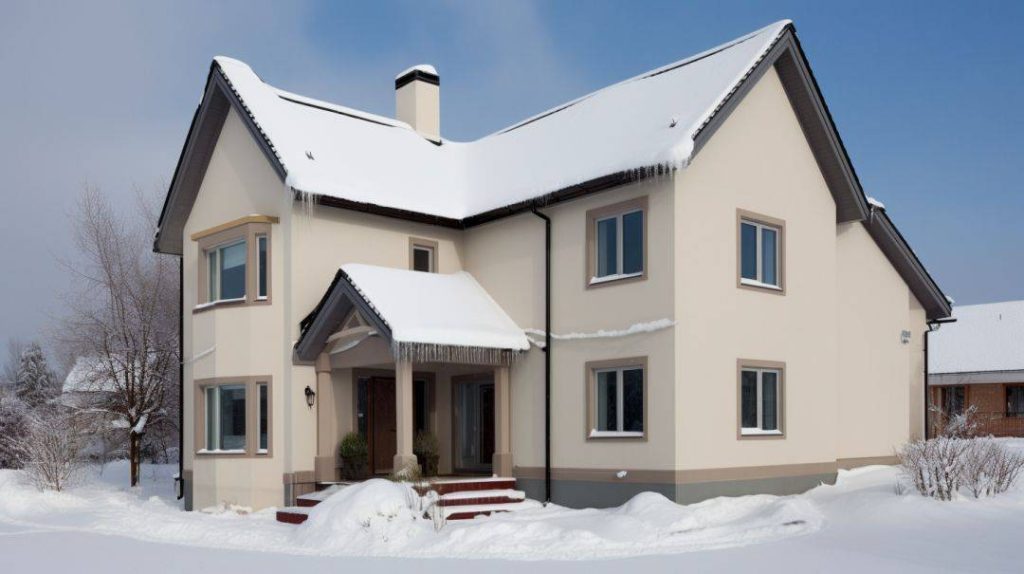
In an era of more extreme weather, homeowners are rightfully concerned about protecting one of their biggest investments – their homes. While no building is immune to severe storms, many strategies can limit damage and improve resilience. One of the most effective approaches is upgrading the exterior walls with advanced insulation and weatherproofing using exterior insulation and finish systems (EIFS).
As detailed in this article, EIFS provides multi-layered protection against the elements. The thick layer of continuous rigid EPS foam insulation enables far higher R-values than standard wood or even masonry walls. This superior thermal resistance protects against temperature swings, reduces ice damming, and cuts heating and cooling costs. EIFS minimizes thermal bridging that undermines other insulation strategies.
The reinforced polymer base coat and acrylic finish coat create an exceptional air and moisture barrier that seals the building far better than conventional sidings. Bulk water penetration is reduced through integrated drainage provisions, flashings, and proper detailing. The impact-resistant finishes also prevent damage from storm debris.
Compared to traditional stucco, wood, fiber cement, or vinyl siding, EIFS solutions from leading providers can enhance weatherproofing, energy efficiency, and moisture management. The versatility of acrylic finishes also allows the creation of traditional simulated styles or sleek contemporary aesthetics. With proper maintenance and integration by an experienced contractor, EIFS will protect homes from the elements for decades.
For homeowners seeking to limit extreme weather risks, reduce energy costs, prevent moisture damage, and refresh their home’s appearance, EIFS merits strong consideration. Consult with qualified local EIFS installers like Indiana Wall Systems to explore how these advanced systems can enhance weatherization and provide lasting benefits for your home. With the right professionally designed and installed system, EIFS can help homes better withstand anything nature dishes out.

